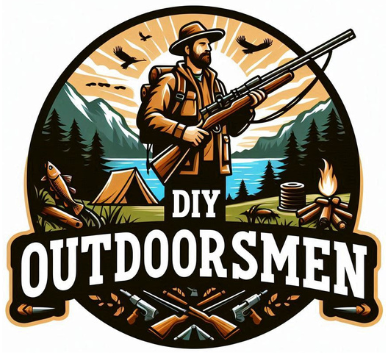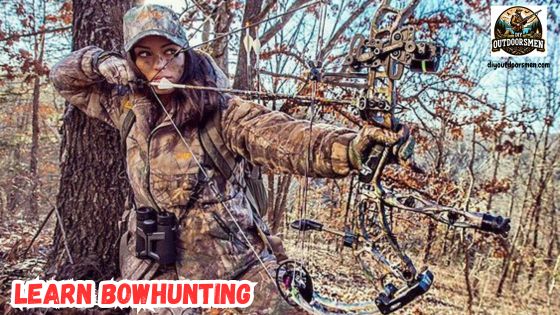Contents
Bowhunting is an art that combines patience, skill, and respect for nature. The practice has a long history and remains a rewarding outdoor activity. I have learned that bowhunting isn’t simply about hitting a target.
QUICK LOOK: 5 Steps to Learn the Art of Bowhunting
- Education: The first step is to enroll in a hunter-education course. These courses are required by state wildlife agencies in many areas before you can purchase a hunting license. Courses are offered online, in person, or through a combination of both.
- Practice: Practice is essential for anyone learning the art of bowhunting. The more precise your shooting skills are, the more successful your hunts would be.
- Hunting Ethics: Commit yourself to following ethical guidelines that ensure both your safety and the welfare of the wildlife your pursue. One guideline is the idea of the 4 C’s: careful, considerate, capable, and courteous.
- Equipment: Having the right equipment is very important for beginners in bowhunting. Having a well-matched bow and supportive gear makes a substantial difference in both performance and comfort during hunts.
- Preparation & Planning: While education and practice are the backbones of bowhunting, being prepared and comfortable in the field is very important for success in any hunt, especially if you are new to this art.
Instead, it revolves around truly understanding wildlife, refining techniques, and continually absorbing new knowledge. In this article, I share different aspects of bowhunting to help beginners build a strong foundation and develop a sincere connection with the environment.
Step 1: Get Educated in Bowhunting
To start my bowhunting journey, I began by investing time in education. Understanding basic safety, hunting ethics, and local wildlife management is essential. I enrolled in a hunter-education course, which proved invaluable in learning safe handling of equipment and the importance of conservation and ethical hunting practices.
Hunter-Education Courses
My first step was to enroll in a hunter-education course. These courses are required by state wildlife agencies in many areas before I can purchase a hunting license. Courses are offered online, in person, or through a combination of both. They cover essential topics like safety rules, proper handling of weapons, and preparation for unforeseen situations in the field.
- Learn about safe bow handling techniques
- Understand wildlife and habitat conservation principles
- Review emergency protocols and ethical hunting guidelines
- Discuss the requirements for obtaining a hunting license
With proper training, I developed a solid foundation in safety practices and in understanding the responsibilities that come with hunting. Education is a key first step that helps ensure a safe and responsible experience in the field.
Step 2: Practice Your Shooting Skills
Practice is essential for anyone learning the art of bowhunting. I knew that the more precise my shooting skills were, the more successful my hunts would be. I began with a practice bow that had a draw weight between 20 and 30 pounds. Using this bow allowed me to build muscle memory and refine my technique without putting too much strain on my arms.
Effective Practice Techniques
To improve my shooting, I practiced with various targets including balloons and 3-D targets. Balloons helped me gain focus and consistency, while 3-D targets simulated real-life game scenarios. I worked on developing a consistent form and learning proper shooting techniques. These sessions were designed to help me understand my own build, the way I handle the bow, and to make necessary minor adjustments to ensure accuracy.
- Use a practice bow with a draw weight of 20-30 lbs
- Shoot at a variety of targets to simulate real hunting conditions
- Refine your form and learn proper shooting techniques. Get your elbow in and keep your shoulders relaxed while practicing controlled breathing before the shot.
- Regular practice builds confidence and muscle memory
Developing consistent shooting skills is a process that takes time and repetition. I noticed steady improvements the more I practiced, which boosted my confidence when I eventually took my bowhunting lessons into the field.
Step 3: Develop Good Hunting Ethics
Good hunting ethics provide the framework for responsible and respectful bowhunting. I committed myself to following ethical guidelines that ensure both my safety and the welfare of the wildlife I pursue. One guideline that really stuck with me is the idea of the 4 C’s: careful, considerate, capable, and courteous.
Four Core Principles of Good Hunting Ethics
- Careful: Always plan with safety in mind. I take time to map my route, know the terrain, and prepare for unexpected events.
- Considerate: I respect wildlife and other hunters. I strive to ensure that my actions do not disturb nature more than necessary.
- Capable: I focus on improving my skills so that every shot I take counts. This means regular practice and proper training.
- Courteous: Courtesy in the field includes being friendly, reporting unsafe behavior, and always looking out for one another.
In addition to these four principles, it is important to be ready for emergencies. A part of good hunting ethics is knowing what to do if something goes wrong. I ensure that I have communication devices, a first aid kit, and a plan for emergencies. Staying in shape also helps me be prepared, as physical readiness can prevent fatigue and injuries during long hunts.
Step 4: Choose the Right Equipment
Having the right equipment is very important for beginners in bowhunting. I found that having a well-matched bow and supportive gear makes a substantial difference in both performance and comfort during hunts.
Recommended Compound Bows for Beginners
For those just starting out, compound bows designed for beginners offer great adjustability and ease of use. Here are some bows that I consider excellent choices:
- Diamond Edge 320: This bow features a variable draw length of 15 to 31 inches and a draw weight range from 7 to 70 pounds. It suits different body sizes and provides steady performance.
- Bear Archery Cruzer G2: Known for its excellent construction, this bow offers a variable draw length between 12 and 30 inches and a draw weight range of 5 to 70 pounds. It is a reliable option for beginners.
- BlackOut Epic: Speed is very important in every hunt. With a speed of 340 fps, this bow offers smooth balance and a high let-off percentage, which gives a boost to accuracy.
- Bear Divergent EKO: It combines a compact design with quick performance, making it convenient for tracking game and maneuvering in the field.
- PSE Uprising: Lightweight and versatile, the PSE Uprising is built to offer consistent performance with a draw weight range of 15 to 70 lbs and a draw length between 14 to 30 inches.
Essential Gear Checklist
A successful hunt requires additional gear aside from the bow. I compiled a checklist to ensure I have everything I need for a safe and successful outing.
- Arrows: Durable and properly spined arrows that match the bow’s draw weight are essential.
- Bow Sights: These assist with aiming and are key for accurate shots.
- Arrow Rest: It holds the arrow in place during the draw, ensuring smooth release when shooting.
- Quiver: A secure container to store and transport arrows safely.
- Release Aid: This tool helps achieve a smooth and consistent release of the bowstring.
- Broadheads: Specifically designed arrowheads for hunting. It is important that the broadheads match the arrows used.
- Bow Stringer: Useful for safely stringing and unstringing the bow.
- Armguard: Protects the forearm from the bowstring during shooting.
- Bow Case: A protective case for transporting and storing the bow securely.
- Rangefinder: Helps determine the distance to the target to improve shot accuracy.
- Field Points: Practical for practice shooting sessions.
- Camouflage Clothing: Clothing that blends with the surroundings helps avoid detection by wildlife.
- Hunting Boots: Well-fitted, robust boots are important for moving safely across varied terrain.
- Field Dressing Kit: Needed for processing game immediately in the field if required.
- Backpack: To carry all essential gear during the hunt comfortably.
Step 5: Tips for a Successful Hunt
While education and practice are the backbones of bowhunting, several additional tips helped me ensure that my hunts were rewarding and safe. Being prepared and comfortable in the field is very important for success in any hunt, especially if you are new to this art.
Important Hunting Tips
- Get comfortable in the field by spending time in nature. Familiarity with the terrain improves your ability to move silently and observe wildlife.
- Maintain your bow by checking strings, cams, and other parts regularly. Well-maintained equipment prevents malfunctions during essential moments.
- Train your dominant eye. Some methods of archery require focusing on the target through limited fields of view, so becoming accustomed to using your dominant eye helps improve accuracy.
- Start with small game such as rabbits, birds, or fox squirrels. This allows you to refine your accuracy and comfort level before targeting larger game.
- Identify a trail between feeding and bedding areas. Knowing animal behavior and regular movement routes increases your chances of a successful hunt.
- Set up a stand downwind of the trail. By positioning yourself where the wind carries your scent away from the target, you reduce the likelihood of alerting the game.
These strategies not only give a boost to your skills but also promote a respectful and safe approach to bowhunting. I found that preparing both physically and mentally is a rewarding part of the process that continually improves performance in the field.
Final Thoughts & Next Steps
Learning the art of bowhunting is an ongoing process that brings together education, practice, ethical behavior, and the proper use of equipment. The journey requires commitment and care but offers a rewarding connection with nature and personal growth. I appreciate each lesson learned from training, practice sessions, and experiences in the wild.
Your Action Plan
- Complete a hunter-education course to understand safety and ethical guidelines.
- Invest time in regular practice with a practice bow to build precision and consistency.
- Focus on developing strong hunting ethics by following the principles of being careful, considerate, capable, and courteous.
- Select a bow that fits your body and skill level from recommended models like the Diamond Edge 320 or Bear Archery Cruzer G2.
- Use a gear checklist to ensure you are well-prepared for every hunt.
- Adopt practical hunting tips such as good field positioning, maintaining equipment, and training your dominant eye.
- Reflect on each hunt and adjust your techniques and equipment as needed.
Every bowhunting journey is unique, and I encourage you to use these guidelines as a starting point. Embrace the learning process. Over time, your skills, understanding, and relationship with nature will deepen. Whether you are aiming at a target for practice or preparing for an actual hunt, each step you take builds a stronger, more confident bowhunter.
Consider what the next step in your bowhunting journey will be. Will you sign up for a hunter-education course or spend a few extra hours on the practice range? The choices you make today shape the success of your tomorrow in the field. I hope you find inspiration and practical advice in these tips and real-life recommendations.
Extra Insights for a Rewarding Bowhunting Experience
Expanding your bowhunting skills is a continual ride of learning and practical application. Over time, every trip into the field teaches you something new about not only the techniques of the sport but also the natural world around you.
Spending quiet hours in nature helps you pick up on subtle clues of animal behavior and changes in the weather. Taking the time to watch the sunrise or sunset amidst towering trees adds a calm, reflective aspect to the experience and makes your overall journey richer.
Furthermore, investing in quality gear and engaging with experienced bowhunters plays a very important role in shaping your adventure. Talking with seasoned experts allows you to ask questions, share experiences, and absorb practical tips that you might not find in textbooks or online courses.
Every piece of advice, from the best angles for an accurate shot to the benefits of specific equipment setups, builds up your confidence and ensures you are well-prepared for the challenges ahead.
This blend of technical training, hands-on practice, and constant self-improvement ensures that your bowhunting adventure stays fresh and exciting. As you progress, you will notice a significant leap in your ability to interpret nature’s subtle signals, making each hunt not only a test of skill but also a deeply personal interaction with the wilderness. The process is filled with challenges and triumphs, and every experience serves to make you a better, more confident bowhunter.
Recent Articles:
- How To Track Wild Hogs DIY Tips And Techniques
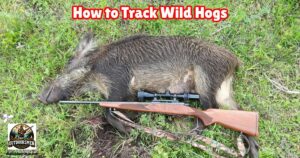
- Bow Vs. Crossbow Hunting: What You Need To Know
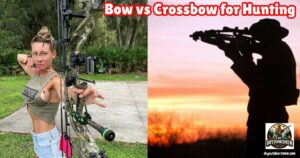
- Understanding Deer Behavior To Improve Your Hunt
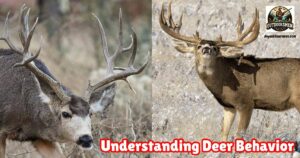
- Complete Guide On Tracking Game Animals
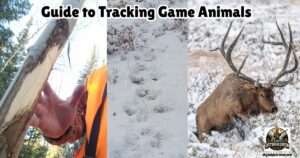
- DIY 4-Step Guide To Field Dressing And Quartering A Deer
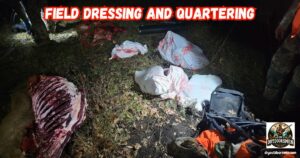
- Night Vision Binoculars For Nocturnal Hunting
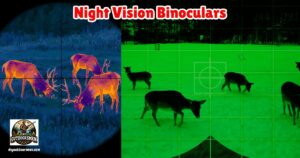
As always, stay safe, enjoy the journey and please try to leave it cleaner than you found it. If you have any comments, questions, ideas, or suggestions please leave them in the comment section below and I’ll get back to you ASAP. You can follow us on YouTube: Man Art Creations for videos of our DIY Adventures.
P.S. – Thanks so much for checking out our blog we really appreciate it. Just so you know, we may receive a commission if you click on some of the links that appear on our site. This helps us keep our content free and up-to-date for everyone. We appreciate your support!
